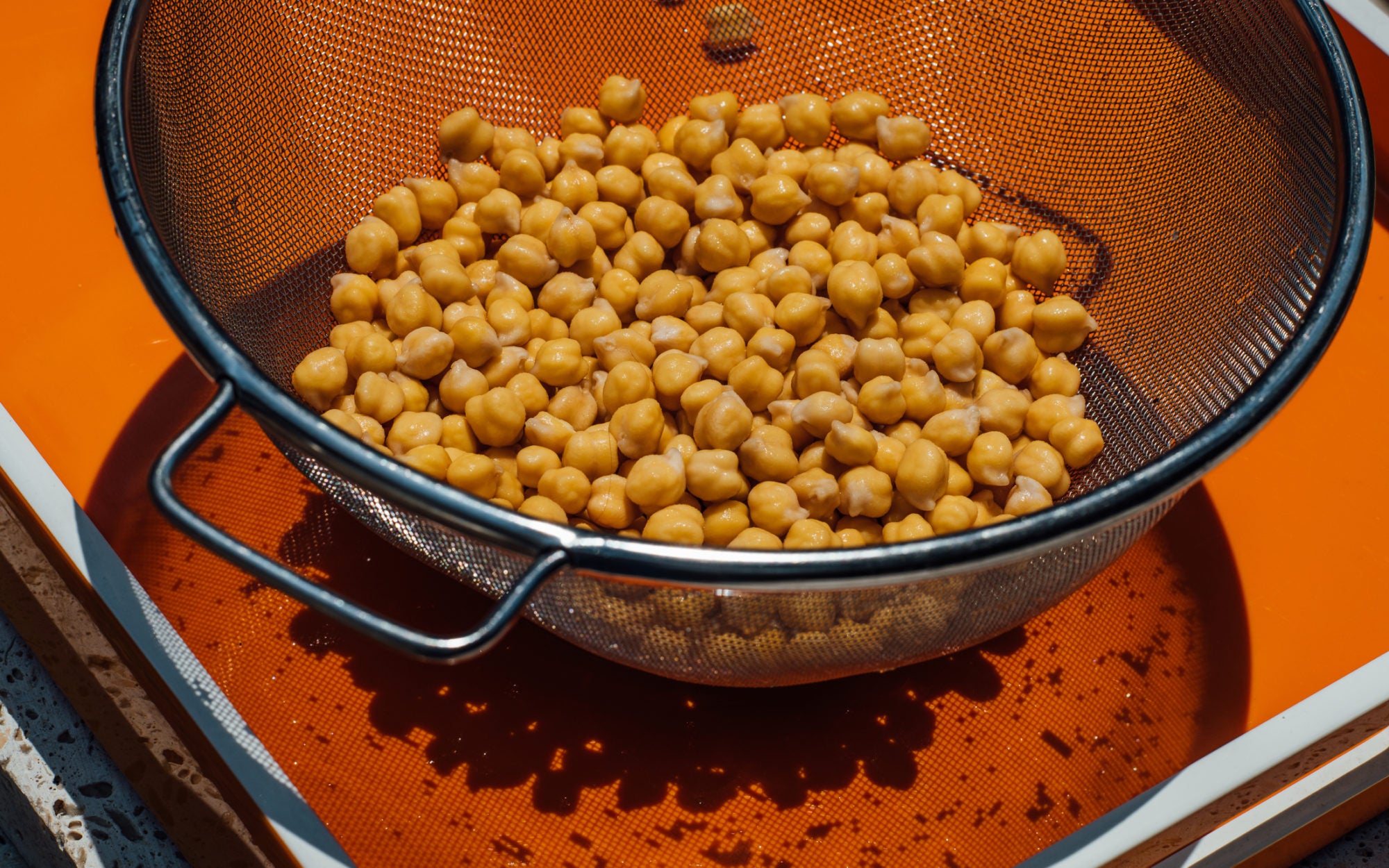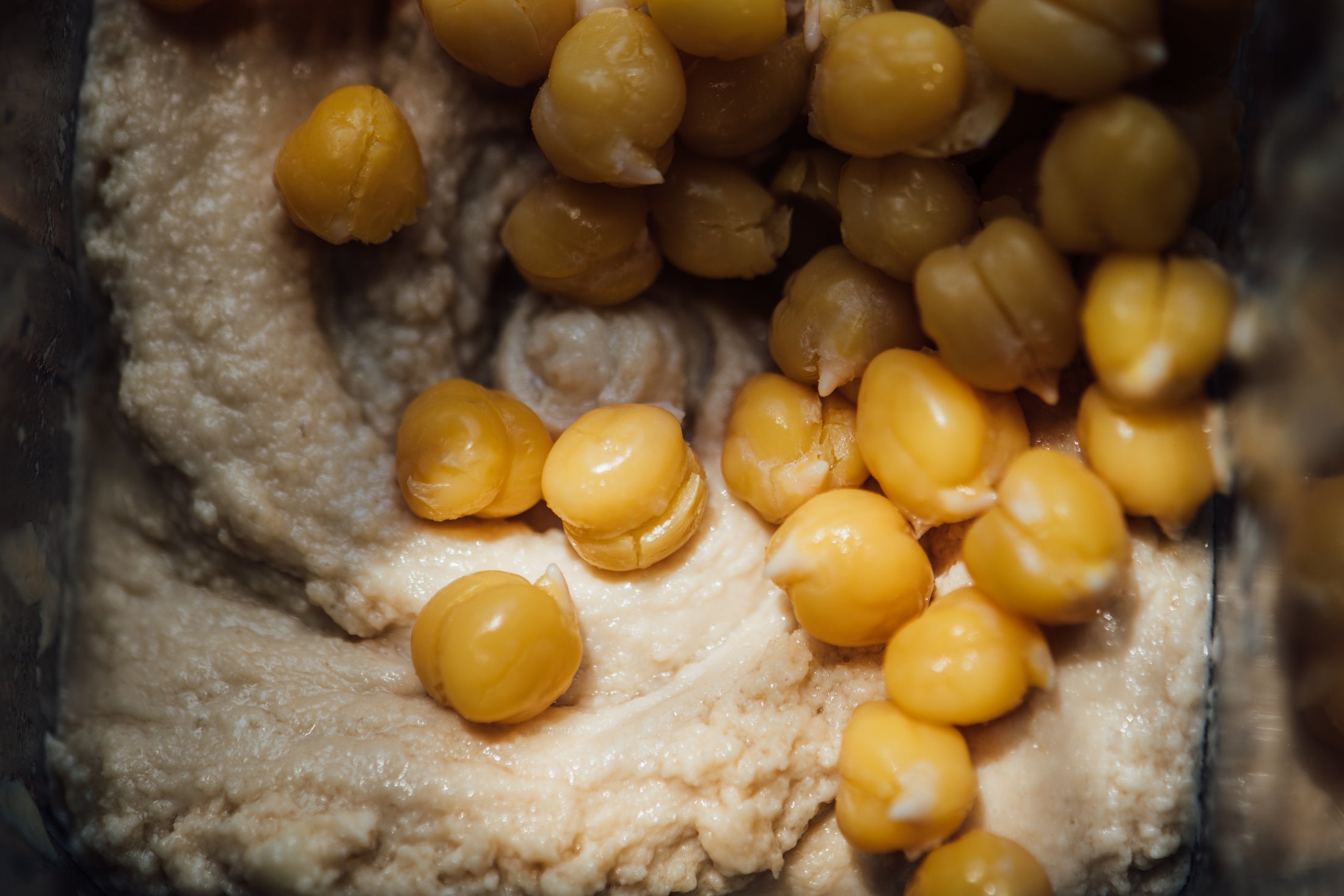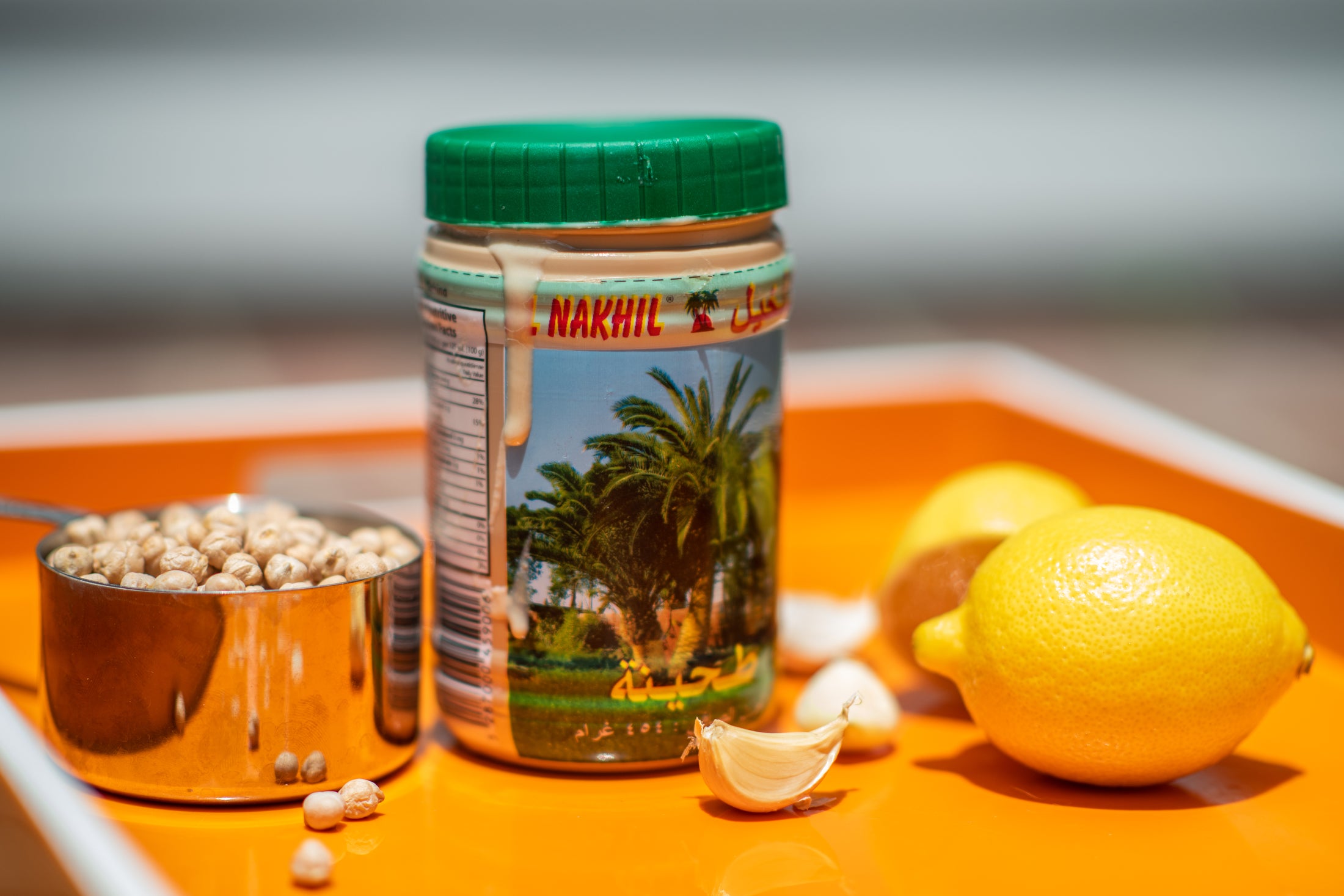
Making hummus without tahini is like making mashed potatoes without butter. You just don’t do that.
We all know that the supermarkets, bodegas, CVS cooler cases, and overpriced airport snack bars are flooded with a delicious chickpea spread labeled hummus. It comes conveniently packaged in many flavors and sizes, and it comes at differing price points. Fewer of us know, though, that this stuff you buy in the supermarket barely resembles a traditional plate of hummus you will find throughout the Middle East and Mediterranean—in Lebanon, Israel, Egypt, and the West Bank.
Like so many consumer products, the “hummus” we find premade and packaged for the masses is a Frankenstein version, re-engineered to lower production costs, increase shelf life, and appeal widely to the American palate. Can you count us as fans of Sabra? Sure, we will scoop Sabra from that little cup with those little salty pretzel discs. Is Sabra actually hummus? We’ll let you be the judge of that.
“Hummus” simply means chickpea in Arabic, and the mass-market version certainly has that going for it. There are chickpeas in there. Yet the full name of the dish is hummus bi tahina (or chickpea with tahini), so the popular nickname conveniently leaves the second-most important ingredient—tahini—out of the equation. Making hummus with little or no tahini is like making mashed potatoes without butter. You can make it that way, but are you really making mashed potatoes? The big issue is that many Americans think they don’t like tahini. Why? Because up until recently, quality tahini, made with freshly grown sesame seeds that have been hulled, roasted, and ground to a creamy, peanut-butter-like consistency, hasn’t been available in the U.S., and poor-quality tahini is just the worst: always bitter or even rancid.
So if you want real-deal hummus, it’s not only worth making your own—it’s actually pretty imperative. Making hummus takes some time and a little planning, but it’s actually quite easy, fun, and affordable, plus healthy and environmentally responsible, and it looks cool on Instagram. There’s really only one catch: Quality tahini can sometimes be tough to find in a local market. Unless you live close to a Middle Eastern supermarket, you’ll probably have to order it online (more on that later). Which leads to the next challenge. Tahini is a perishable ingredient that relies heavily on the quality of its base and only ingredient: sesame seeds. These aren’t commercially grown anywhere in the United States, meaning the tahini you find in your average supermarket is coming from overseas, and the quality and freshness varies greatly from brand to brand. Translation: You’re better off with a container of Sabra than gambling on an unknown source.
The best tahini is made from Ethiopian sesame seeds, and the difference from the stale, dusty, and bitter canned supermarket stuff is astronomical with freshly milled tahini, which offers an intensely savory and subtly sweet flavor and a creamy texture that’s unattainable from any other ingredients. In fact, when you invest in the good stuff, we recommend using it in many dishes: trying it as a condiment for vegetables, in salad dressings, and as a flavor enhancer in sauces. Big Hummus often substitutes oil for tahini, which bumps up the fat content of the finished product. But the end result is suspect.
So do yourself a favor and order a jar of good-quality tahini online. It’s not that expensive, and you will be happy you took that extra step. Philadelphia’s Soom is our personal favorite, with El Karawan, Al Wadi, and Alkanater all tying for a close second. It will last a year or so from the date it’s milled. Once your tahini arrives, the fun begins. All you need to do is soak some chickpeas overnight with a little baking soda (the sodium bicarbonate raises the pH of the cooking liquid, helping break down the proteins, which will give your hummus an extra creamy texture) and get cooking.
RECIPE: Homemade Hummus Is Worth It
TASTE editor in chief Matt Rodbard and chef Daniel Holzman are friends. Matt has many food and home cooking questions. Daniel has many food and home cooking opinions. This is called 100 Questions for My Friend the Chef.

